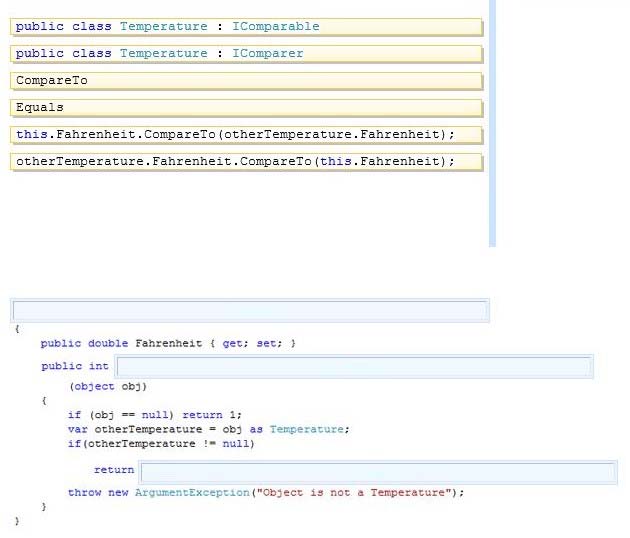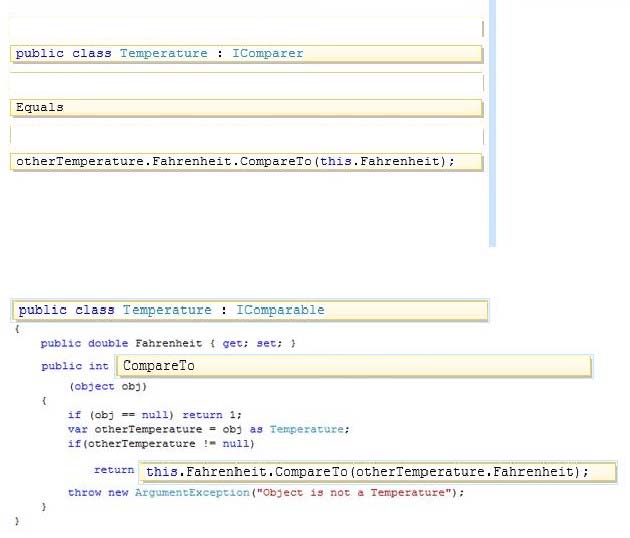

DRAG DROP -
You are developing a class named Temperature.
You need to ensure that collections of Temperature objects are sortable.
How should you complete the relevant code segment? (To answer, drag the appropriate code segments to the correct locations in the answer area. Each code segment may be used once, more than once, or not at all. You may need to drag the split bar between panes or scroll to view content.)
Select and Place:

Ofer
Highly Voted 5 years, 4 months agoDaGrooveNL
Most Recent 4 years, 5 months agonoussa
4 years, 5 months agonoussa
4 years, 5 months agonoussa
4 years, 5 months agohseagraves
4 years, 5 months agohseagraves
4 years, 5 months agoEpit2021
4 years, 6 months agoHgstExam
4 years, 10 months agofavori3
4 years, 10 months agoCNTPD1
5 years agoDmn28
4 years, 10 months ago